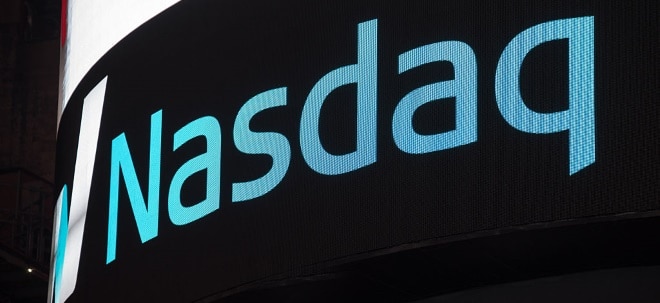Ensuring your out-of-home strategy is not out-of-order
Werte in diesem Artikel
Reevaluating out-of-home to include self-service solutions such as lockers and parcel shops will ensure customers are offered practicality, convenience, and simplicity, says Phil Sambrook, Transport and Logistics Vertical Lead EMEA, Zebra Technologies“With parcel volumes rising and delivery margins shrinking, logistics companies now face many challenges to their operating models. For C-suites, this means current shifts in consumer and business expectations are among the hottest topics discussed around the boardroom table.Such changing demands, needs, and wants – most often related to delivery speeds and drop locations – place huge pressures on leaders and their employees to do better.However, that comes at a (me when CEOs and CFOs must also do more with less in an online age where orders of all sizes are placed in an instant.Expectations will only become harder to meet or to manage but when the right internal decisions are taken, on how to deploy technology and introduce digital transformation, a solution can be found.For leaders, it is now imperative to act with speed to introduce positive change to operations. According to Ofcom, measured parcels across the UK increased by 8.3% to3.9bn items in 2023/24, close to the 4bn pandemic peak in 2020/21.This is a positive growth story for the industry and experts now predict a global 7% rise year- on-year in B2C deliveries until 20322. In the next decade, it’s suggested, same-day UK parcel deliveries will increase by a compound annual growth rate until 2034 of just over 10%.A simple way to prepare for this busier future is to understand how those within the logistics industry act when they send parcels or receive their own deliveries. A C-suite that considers this as part of the change process, and asks its workers to do the same, will transform from recognising, and focusing on, the pain points and requirements of everyday consumers.We are all delivery customers at some point As logistics moves forward into this high-growth future, three factors must be considered:Practicality. Some days people might be working from an office where it’s not convenient to take in a parcel, while on other days (often the same ones each week) they are at home and able to receive it or sign for it.Convenience. Lockers are increasing in number, g. at supermarkets in the UK, but many others are still inconvenient to reach or inaccessible on foot with some too small for larger packages.Simplicity. The ability to decide when, where, and how a delivery arrives is Improved live tracking information, more options to re-route on the fly, and consistent updates via email and apps are now basic must-haves.All of the above can be – and are being – solved by introducing technology into out-of-home strategies. Not only does this improve capabilities for operations to meet increasingly stringent SLAs, but it boosts overall commercial revenues and creates new revenue opportunities for services that may not yet exist.Importantly, when you take action to serve your customers in the ways they want to be served, you identify efficiencies, see how delivery times can be sped up, and understand where leaders and managers should redeploy employees to empower new ways of working.That’s why, as someone who often collects and returns parcels for my daughter, I personally know all of this to be true, and it is likely most of us working in or alongside logistics would have experienced a problem with the processes and systems at some point in the past.For instance, I’ve headed down to my local parcel shop only to find the in-store screen or printer isn’t working. Others might have headed to a locker only to find it is full or offline.Leaders who harness these personal experiences unlock the right choices for change.There’s a cost when failing to transformFor last-mile logistics operators across Europe, most delivery dilemmas are the same. Take missed deliveries. When someone isn’t at a property, and you can’t leave a parcel safe or with a neighbour, there’s an additional cost to the business for the courier to return.The seller of the goods only paid one fee for that single drop. Now it has to cover two trips, or maybe even three, so it’s easy to spot how this financial hit means budgets won’t add up.Rethinking this final mile is now critical. Lockers are certainly one pivot to ensure fast and flexible delivery. In the UK, InPost has plans to invest £1bn by 2029 to expand its own locker network while DPD is adding 8,000 more lockers to its map over the next five years in a partnership with Yeep!Across mainland Europe, Geopost’s locker locations rose 63% to 31,000, while other stats suggest total locker numbers on the continent have increased by more than half since 2021.Another prediction puts the European automated parcel lockers market at a compound annual growth rate of 15–18% over the next five to 10 years and this exemplifies how consumers are now far more accepting of this option to collect goods or drop a return. The convenience offered is especially important when life or work demands might make getting to a parcel shop during its opening hours extremely difficult.But if we are to rely on lockers far more, they must work; consistent up-time is vital.Typically, each has a touchscreen (for entering a pin code), a scanner (for recognising a QR code), and a printer (for any physical labels or receipts) – and if one part fails, the entire opera(on fails, even down to simple elements like running out of labels.And as they grow in numbers, they will become more relevant among kids, teens, and young adults; they are the decision-makers of tomorrow whose experiences and expectations of last-mile logistics today will decide the industry’s future tomorrow.Small changes return big rewardsLockers though are only one part of the industry’s out-of-home puzzle. The ability of parcel shops to successfully manage expected increases in volume must be improved too – especially for self-service solutions, e.g. a kiosk made up of a tablet and printer, that removes the need to interact with the person behind the counter.Whether placed in a convenience store, post office, or other retail unit, these systems mean employees can get on with serving their own customers, keeping queues down because they no longer have to manually scan parcel after parcel and hand out receipts.However, too many self-service kiosks are not user-friendly enough to meet those three consumer needs of practicality, convenience, and simplicity. This leads to someone in-store being pulled away from their task to intervene and help, guide, or fix. If this occurs too often, store owners will rethink the benefits of having the parcel terminal installed.Change doesn’t have to be huge to be revolutionary though; technology can do smaller elements better to boost overall customer satisfaction. For example, when users tear off the label printed during self-service, problems can occur. It can rip, it can tear the backing paper, it can snag, and it can leave pieces inside the printer that stop it working for the next person; all create problems for in-store staff to deal with.But a small change would see liner-less labels address this issue as they are cut by the printer and have the added bonus of not needing backing paper, removing the need and cost for a retailer to dispose of that paper correctly.Your transformational journey should begin now By working with a trusted partner to supply self-service systems and locker technology, those in the logistics industry will remove any hassle for them when things go wrong. Remote monitoring anticipates problems before they occur – such as labels running low – or in real-time, dispatching engineers quickly to prevent poor customer experience.BeLer use of apps and alerts on smartphones plus more efficient route-mapping also play their part when having a third-party onboard. Working with in-house experts, solutions can be more effectively developed and made easier to maintain.The out-of-home landscape is already changing fast; it is critical C-suites get the next decisions, choices, and steps right. When fewer parcels and packages return to depots, last- mile logistic firms can lower operational costs, maintain delivery SLA targets, and operate more efficiently.Only then can the three consumer expectations of practicality, convenience, and simplicity when receiving or sending deliveries be satisfied by technology and transformation.It demands continuous improvement, attention, and investment and while there is no final destination, it is a journey made much easier and far more successful when you have a strong partner navigating alongside you.”To understand how Zebra can be part of your out-of-home journey: contact Zebra TechnologiesWeiter zum vollständigen Artikel bei Post&Parcel
Übrigens: Strategy (ex MicroStrategy) und andere US-Aktien sind bei finanzen.net ZERO sogar bis 23 Uhr handelbar (ohne Ordergebühren, zzgl. Spreads). Jetzt kostenlos Depot eröffnen und als Geschenk eine Gratisaktie erhalten.
Ausgewählte Hebelprodukte auf Strategy (ex MicroStrategy)
Mit Knock-outs können spekulative Anleger überproportional an Kursbewegungen partizipieren. Wählen Sie einfach den gewünschten Hebel und wir zeigen Ihnen passende Open-End Produkte auf Strategy (ex MicroStrategy)
Der Hebel muss zwischen 2 und 20 liegen
| Name | Hebel | KO | Emittent |
|---|
| Name | Hebel | KO | Emittent |
|---|
Quelle: Post&Parcel
Nachrichten zu Strategy (ex MicroStrategy)
Analysen zu Strategy (ex MicroStrategy)
| Datum | Rating | Analyst | |
|---|---|---|---|
| 11.02.2019 | Microstrategy A Buy | BWS Financial | |
| 27.10.2017 | Microstrategy A Buy | Mizuho | |
| 28.07.2017 | Microstrategy A Hold | Deutsche Bank AG | |
| 16.11.2016 | Microstrategy A Buy | Mizuho | |
| 11.01.2016 | Microstrateg a Buy | Deutsche Bank AG |
| Datum | Rating | Analyst | |
|---|---|---|---|
| 11.02.2019 | Microstrategy A Buy | BWS Financial | |
| 27.10.2017 | Microstrategy A Buy | Mizuho | |
| 16.11.2016 | Microstrategy A Buy | Mizuho | |
| 11.01.2016 | Microstrateg a Buy | Deutsche Bank AG | |
| 11.12.2015 | Microstrateg a Buy | Mizuho |
| Datum | Rating | Analyst | |
|---|---|---|---|
| 28.07.2017 | Microstrategy A Hold | Deutsche Bank AG | |
| 19.10.2015 | Microstrateg a Hold | Lake Street | |
| 31.10.2012 | Microstrateg a neutral | ROTH Capital Partners, LLC | |
| 30.10.2012 | Microstrateg a neutral | UBS AG | |
| 31.07.2012 | Microstrateg a neutral | UBS AG |
| Datum | Rating | Analyst | |
|---|---|---|---|
| 16.03.2005 | Update Microstrategy Inc.: Sell | Wedbush Morgan | |
| 09.02.2005 | Update Microstrategy Inc.: Sell | Deutsche Securities |
Um die Übersicht zu verbessern, haben Sie die Möglichkeit, die Analysen für Strategy (ex MicroStrategy) nach folgenden Kriterien zu filtern.
Alle: Alle Empfehlungen


